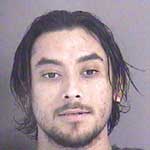Hollister
– The Hollister Gang Task Force Advisory Board held a Community
Gang Education Forum Wednesday evening to educate the public on
what parents can do to keep their children out of gangs and what
community members can do to help keep gang activity out of their
neighborhoods.
Hollister – The Hollister Gang Task Force Advisory Board held a Community Gang Education Forum Wednesday evening to educate the public on what parents can do to keep their children out of gangs and what community members can do to help keep gang activity out of their neighborhoods.
San Benito County Probation Officers Nick Rabago and Claudia Huerta and Hollister Police Officer Rosie Betanio presented materials to more than 250 community members at the Veteran’s Memorial Building. The officers estimate that there are approximately 1,000 gang members and their associates in Hollister. Police Chief Jeff Miller said community involvement plays a major role in combating gang activity.
“I’m very heartened by the number of people here tonight,” Miller said.
Hollister’s gang problem has increased during the past few years, Miller said. The Hollister City Council established the Hollister Gang Task Force Advisory Board in August of 2004 through a resolution. The board held its first meeting in November of 2004 and through additional meetings began to identify the contributing factors and possible solutions to the gang problem in Hollister. The board has identified a need for wider community education.
Gangs have not always been a problem in Hollister. When Valerie Pennington, a sixth-grade teacher at Marguerite Maze School, moved to Hollister 17 years ago, there were no gang problems, she said.
The forum helped educate her on just how big the problem has become.
“I knew it was big,” Pennington said. “But it was bigger than I thought.”
Hollister’s lack of funding for prevention programs and limited intervention programs make Hollister a fertile breeding ground for establishing gangs.
“Other cities are taking active efforts,” Miller said. “Hollister has been viewed as an available ground to become established.”
Rabago said the majority of Hollister street gang members are in the Norteño and Sureño gangs. The history of the Norteños and Sureños in California began in the penal system in the 1950s with the formation of the Mexican Mafia, or EME, and Nuestra Familia, or NF, which means “Our Family,” Rabago said.
The Mexican Mafia is dominated by Southern Californians and the Nuestra Familia is dominated by Northern Californians, hence the names Sureño, or southerner, and Norteño, or northerner, which are both lesser incarnations of the original gangs. In order to be in either EME or NF, a member must go through prison and ascend to such status. Norteños and Sureños are not considered NF or EME but have similar practices and imitate the respective prison gangs, Rabago said.
There are approximately 700 to 900 Norteños and their associates living in Hollister compared to approximately 100 Sureños and their associates, Rabago said. The heavily outnumbered Sureños can often be much more violent than their Norteño counterparts, Rabago said.
“The Sureños are mostly transplants,” Rabago said. “They aren’t from this community. They weren’t raised here.”
Specific Norteño gangs in Hollister include Barrio Hollister Territory, or BHT; WestSide Locos, or WSL; and EastSide Norteños, or ESN, Rabago said. Specific Sureño gangs include the SouthSide Locos, or SSL, which is 10 years old, and the SouthSide Soldiers, which is approximately a year old, Rabago said.
The forum presented ways community members and parents can recognize early signs of gang activity and signs of fully involved gang members. Sureños wear blue and since “M,” for EME, is the 13th letter of the alphabet, gang members use different forms of the number 13 to represent their gang.
Norteños wear red, and since “N” is the 14th letter of the alphabet, gang members often use different forms of the number 14 to represent their gang. Clothing, tattoos, language and hand signs are ways members use to communicate affiliation with a gang to fellow and opposing gang members, Huerta said. Members also use cell phones and the Web site MySpace.com to communicate, Huerta said.
There are certain signs of gang activity in a neighborhood that include graffiti, tagging, loitering youths, drug houses and increases in crime, Betanio said. If any community members see these signs, they should contact law enforcement officials, Huerta said. Neighborhood watch groups are also effective in combating gangs.
“I know the Hollister Police Department has resources to help you get started,” Huerta said.
Parents should increase their awareness of their children’s belongings and clothing, as well as knowing who their friends are and where they hang out, Huerta said. Communication between a parent and child, including discussing the consequences of being in a gang, is essential, Huerta said. If parents concerned their child may be involved in a gang, there are community groups such as youth organizations and churches available to help, Huerta said.
Miller stressed the importance of getting a number of neighborhood members involved. He said it is easy for gang members to intimidate only one or two community members, but when 10 to 15 stand up, gang members find it more difficult.
Every official at the forum stressed community involvement.
“Gangs are only as strong as the community allows them to be,” Huerta said.
Michael Van Cassell covers public safety for the Free Lance. He can be reached at 831-637-5566 ext. 335, or
mi***************@fr***********.com
.






